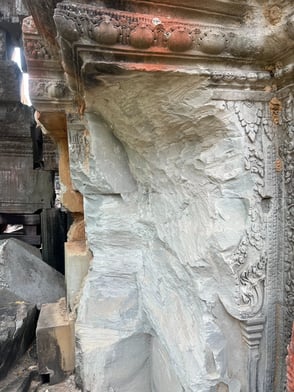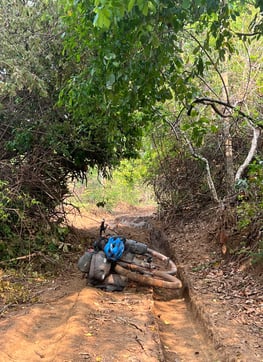Cambodia
Dusty trails on Route 66
8/25/20234 min read
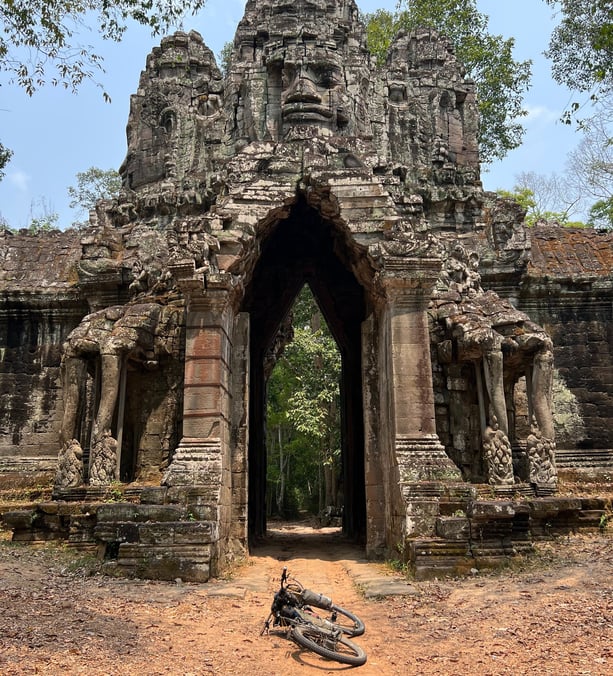

Cambodia
Dusty trails on Route 66
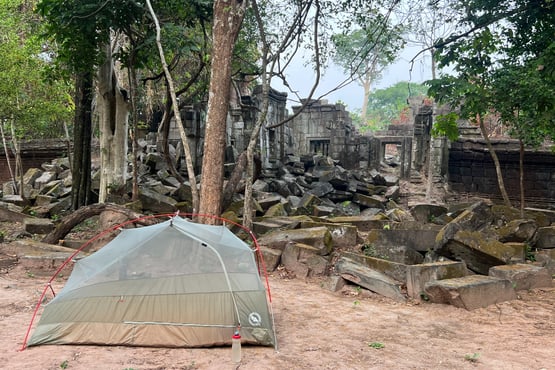

After some long, hot days riding along Cambodia's highways, I was on the market for some variety, and the discovery of an alternative to sharing the road with hundreds of articulated lorries had come about at the right time.
Cambodia's Route 66 is an old imperial road in the north-west of the country, a dirt track that nowadays serves as a dusty, red artery, weaving between the small rural communities in the area.
It also acts as a bit of a 14th century Khmer temple sightseeing tour, starting at the famous Angor Watt complex and finishing at the more modest (but still impressive) site, Ta Seng, all while featuring multiple lesser known temples en route.
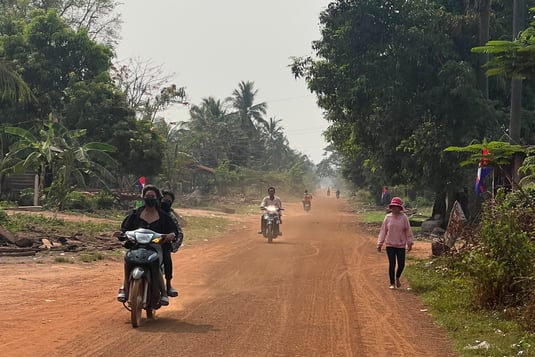


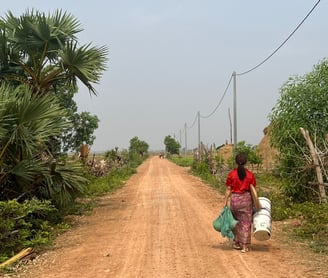
Leaving Siem Reap in the early morning, the party atmosphere of Songkran, Buddhist New Year, was already heavy in the air. Loud bass music reverberated through tightly packed alleyways, and I was soon on the losing side of multiple water pistol battles as I exited the city.
The route begins straightforwardly enough, heading along a jeep track east through the backcountry. Pockets of civilisation line the road every 5-6km or so, which in typical Cambodian fashion usually consist of stalls boasting some of the more obscure-looking meat i'd seen on the trip (think monitor lizards, storks, and everything in between), along with the roadside classic of snails fried in garlic and chilli.
Water buffalo patrolling the roadsides are affectionately shoed away from the fruit stalls of elderly ladies, and children shriek with excitement to not only see a 'farang' (foreigner) in their village but also one riding a pretty filthy bicycle.
As the sun begins to drop below the horizon I see I'm nearby one of the many temples en route and divert through some singletrack into the emerging treeline. After a few minutes, the outline of a multi-storey sandstone structure emerges from the forest, and despite the layers of moss and roots that are slowly pulling the site back into the earth, the finer details of the seven hundred year old temple remain incredibly clear.
The lack of signage, ticket offices, and lists of do's and don'ts that you'd usually expect around such old heritage sites added a ruggedness that would be difficult to replicate in the western world, and after an uninspired combination of spaghetti and pesto I had a campsite that would make Lara Croft jealous (assuming she's into in this sort of thing)
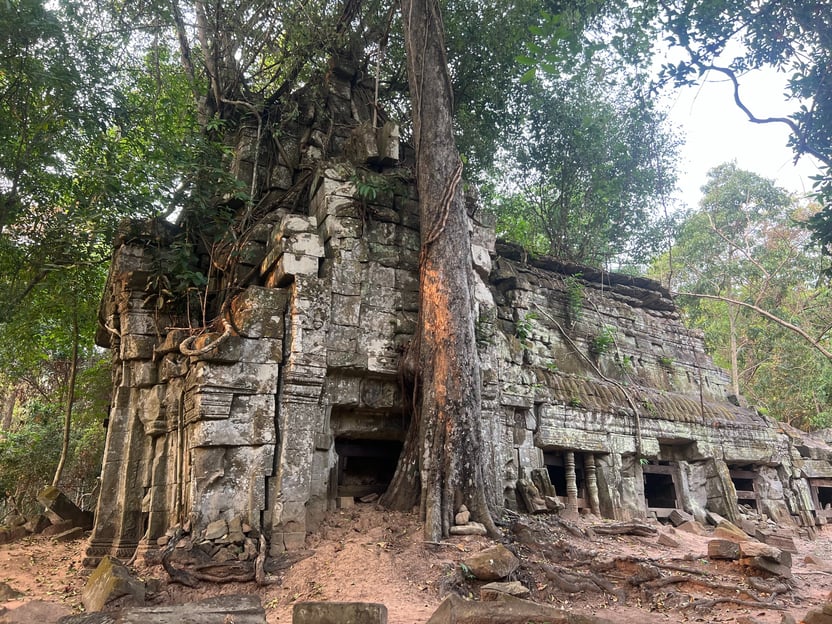

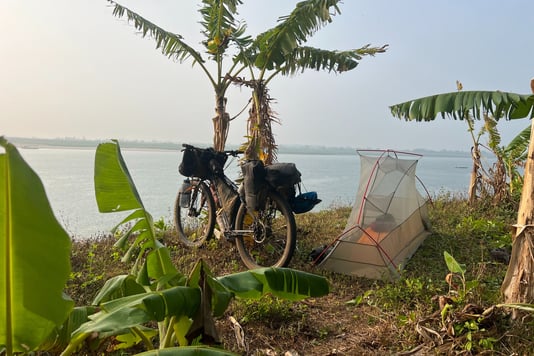

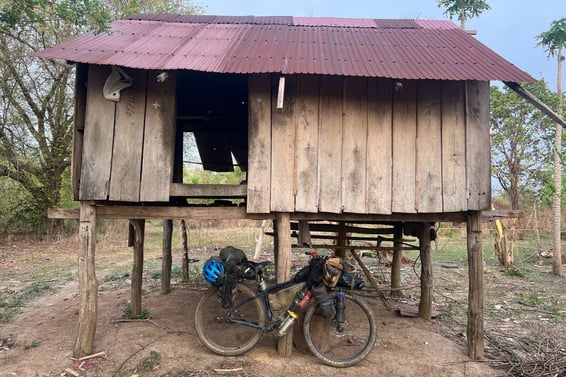

In rural Cambodia I also found it tough to identify restaurants. A stack of chopsticks and a parasol covered in beer logos? Nope, another barber shop. Eventually I pulled up next to a large table with a big group eating - a good sign, surely. After sitting down it became obvious that this was someone's garden and that i'd invited myself to a families New Year's celebrations. After some handshakes, selfies and obligatory tyre squeezes I was quickly invited to join their meal.
Similar scenes repeated themselves multiple times over the coming days, and I quickly found myself on the receiving end of the incredible hospitality i'd found the world over.
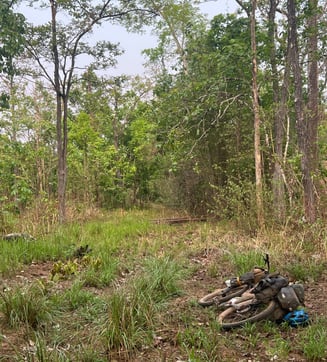

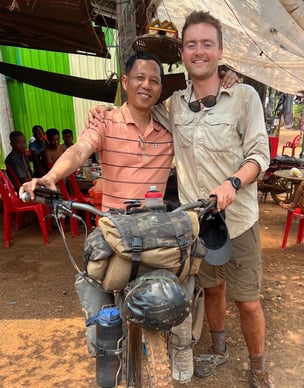

The second half of the route is more remote and was overgrown in a way that would usually have deterred perseverance if not for the thin blue line on my GPS. Tangles of thorny branches that lie across much of what was left of the track were doing an efficient job of transforming my shirt into a string vest, and water was running low.
Picking through the undergrowth progress soon became glacial, and the sun had been set for several hours before the lights of the village of Ta Seng marked the end of the line. Festivities were still in full swing, and after seeing me trudging through the centre of a village optimistically looking for a restaurant, I was approached by a man on a moped, asking if I'd like to join him and his friends' celebrations.
He kindly put me up for the night, and the following morning gave me a ride to several of the larger temples in the area. While the structures remain impressive, a lot of their interior has been reduced to rubble, ransacked by looters looking for gold rumoured to have been within the stones.
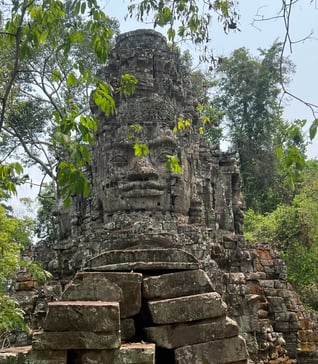

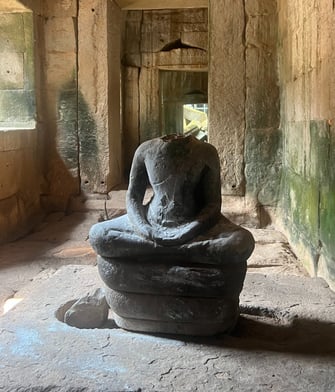

My guide also explained the sad reality behind the missing heads and faces of almost all of the busts and sculptures, removed to be sold on the black market. While looting and vandalism are issues found the world over, the scars that define so much of the ancient stonework convey just some of the social and economic problems that Cambodia has had to endure in the last few decades alone, with much of the damage having taken place within my guide's lifetime.
After a final meal and some surprisingly heartfelt goodbyes it was time to head south to find some asphalt, and by the end of the day I had re-joined the rest of the lorries heading towards Phnom Penh.
